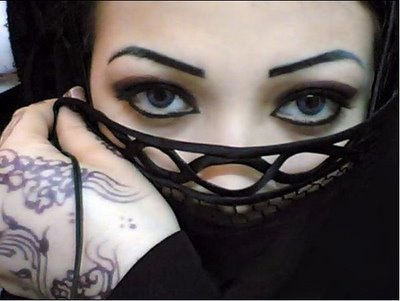The Yezidi (Yazidi) cosmology and religion is non-dual. They thus acknowledge an inactive, static and transcendental God who created, or "became", Seven Great Angels, the leader of which was Tawsi Melek, the Peacock "King" or Peacock "Angel".
Leading up to the creation of the cosmos, many Yezidis believe that the Supreme God was originally "over the seas", a notion reminiscent of the Biblical passage: "And the Spirit of God (as seven Elohim) moved upon the face of the waters." While playing with a white pearl, state the Yezidis, their Supreme God cast it into this cosmic sea. The pearl was broken and served as the substance from which the Earth and other planets and stars came into being.
The Supreme God then created or manifested a vehicle for completing the creation of the universe. This was the first and greatest angel, Tawsi Melek, the Peacock Angel. Since Tawsi Melek embodied the power and wisdom of the Supreme God he was easily able to know and carry out His bidding. Six more Great Angels were then created to assist Tawsi Melek in his work.
Soon after the Earth was created it began to shake violently. Tawsi Melek was then dispatched to Earth to stop the planet's quaking, as well as to endow it with beauty and abundance. When Tawsi Melek descended to Earth, he assumed the form of a glorious peacock - a bird full of the seven primary and secondary colors. Landing in a place now known as Lalish, Tawsi Melek transferred his peacock colors to the Earth and endowed it with a rich flora and fauna.
Tawsi Melek then traveled to the Garden of Eden to meet Adam. The first human had been created without a soul, so Tawsi Melek blew the breath of life into him. He then turned Adam towards the Sun, symbol of the Supreme Creator, while stating that there was something greater than a human being and it should be worshipped regularly. Tawsi Melek then chanted a prayer for all humanity to daily repeat to the Creator, and he did so in the 72 languages that were going to be eventually spoken by the 72 countries and races that were destined to cover the Earth.
Then Eve was created. But according to the Yezidis before copulating the primal couple enrolled in a kind of competition to see if either of either of them could bring forth progeny independent of the other. They both stored their seed in a sealed jar and then after an incubation period opened them. Eve's jar was opened and found to be full of insects and vermin, while inside Adam's jar was a beautiful boy-child. This lovely child, known as Shehid bin Jer, “Son of Jar,” grew quickly, married, and had offspring. His descendants are the Yezidis. Thus, the Yezidis regard themselves descendants of Adam but not Eve.
Shehid bin Jer inherited the divine wisdom that Tawsi Melek had taught his father Adam and then passed it down to his offspring, the earliest Yezidis. It is this wisdom that has become the foundation of the Yezidi religion.











